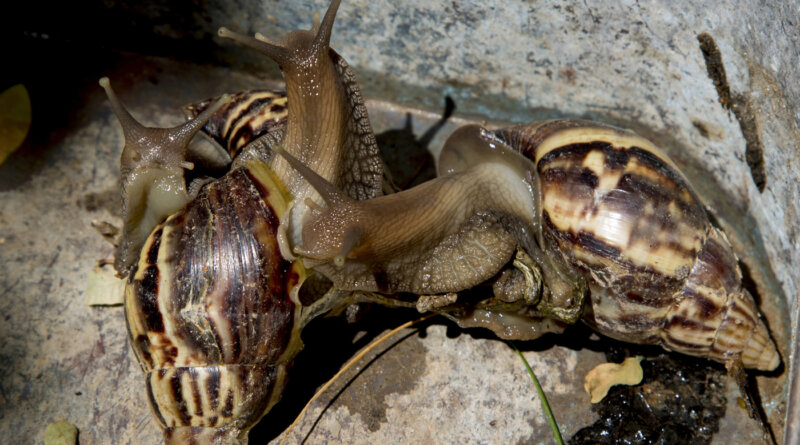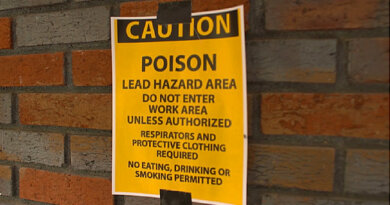Florida once again has a giant African land snail problem : NPR

Giant African land snails — seen here in 2019 — have been spotted recently in three counties in Florida, spurring state officials to enact quarantines and eradication efforts against the invasive pests.
Ismael Francisco/AP
hide caption
toggle caption
Ismael Francisco/AP

Giant African land snails — seen here in 2019 — have been spotted recently in three counties in Florida, spurring state officials to enact quarantines and eradication efforts against the invasive pests.
Ismael Francisco/AP
Giant African land snails are back in Florida, spurring intensive efforts to destroy the invasive mollusks before they spread and wreak agricultural and environmental destruction.
After one of the large brown snails was spotted earlier this month north of Miami, the state has declared a quarantine and treatment area over a few square miles in the Broward County city of Miramar. The quarantine joins two others already underway in the state: one in Lee County, which is home to Fort Myers, and one in Pasco County, north of Tampa.
“The giant African land snail is one of the most damaging snails in the world, consuming at least 500 different types of plants,” the Florida Department of Agriculture and Consumer Services declared this week. “These snails could be devastating to Florida agriculture and natural areas as they cause extensive damage to tropical and subtropical environments.”
They’ve also been known to attach to houses and eat the stucco walls.
The Miramar quarantine means it’s illegal to move the snails and lots of other things — including plants, soil, debris and building materials — through or from the defined area without explicit permission.
Giant African land snails contain both male and female reproductive organs, and they don’t need a mate to reproduce. Reproduce they do, quickly and profusely – laying up to 500 eggs at a time, according to a factsheet from the U.S. Department of Agriculture.
The USDA warns of serious health risks to humans: the snails can be carriers for rat lungworm, a parasite that can cause a rare type of meningitis in humans.
At full size, the snails grow up to 8 inches long and almost 5 inches in diameter, about the size of an adult fist. They have a brownish shell that covers about half their body.
This isn’t the first time Florida has dealt with these snails
Last summer, a master gardener in Pasco County spotted one of the snails in the city of New Port Richey, leading to a quarantine in the area.
Why do these snails keeping arriving? Officials suspect they were brought in as pets, which is illegal. “Invertebrates may seem interesting to keep as pets in a terrarium, but many are illegal to own because they could harm U.S. agriculture and the natural environment if they escape,” the USDA’s Animal and Plant Health Inspection Service warns.
Alternatively, the snails might be brought in as snacks: They are considered a delicacy in West Africa. In March, customs officials at Detroit Metropolitan Airport seized six live snails in the suitcase of a traveler arriving from Ghana.
Florida has eradicated the highly invasive snail before, according to the USDA. The snail arrived in downtown Miami in 1966, and wasn’t declared eradicated until 1975. In that time, the state destroyed more than 18,000 snails and thousands of eggs – at a cost of more than $3 million in today’s dollars.
The snail popped up again in Miami in 2011. After efforts from the USDA’s Animal and Plant Health Inspection Service and the state of Florida, the snail was once more declared eradicated in 2021. The cost to destroy 168,000 snails and countless eggs was far greater this time around – more than $23 million.
The eradication process that begins now in Miramar will be lengthy. The state will treat properties in the area with a molluscicide (snail bait) 26 times, followed by several surveys — including one performed by a dog specially trained to detect the snails.
The quarantine will remain in place throughout this process, the state’s agriculture department says, in order to “safeguard Florida’s agriculture industries and natural resources along with ensuring there are no international trade implications enforced due to the establishment of this detrimental pest.”







